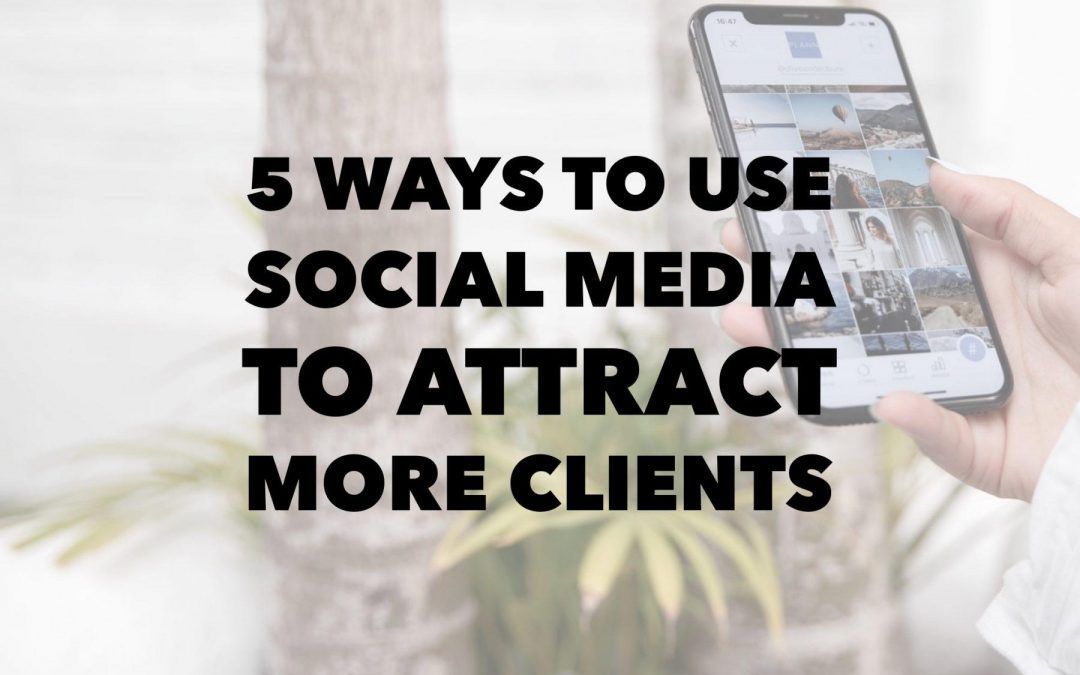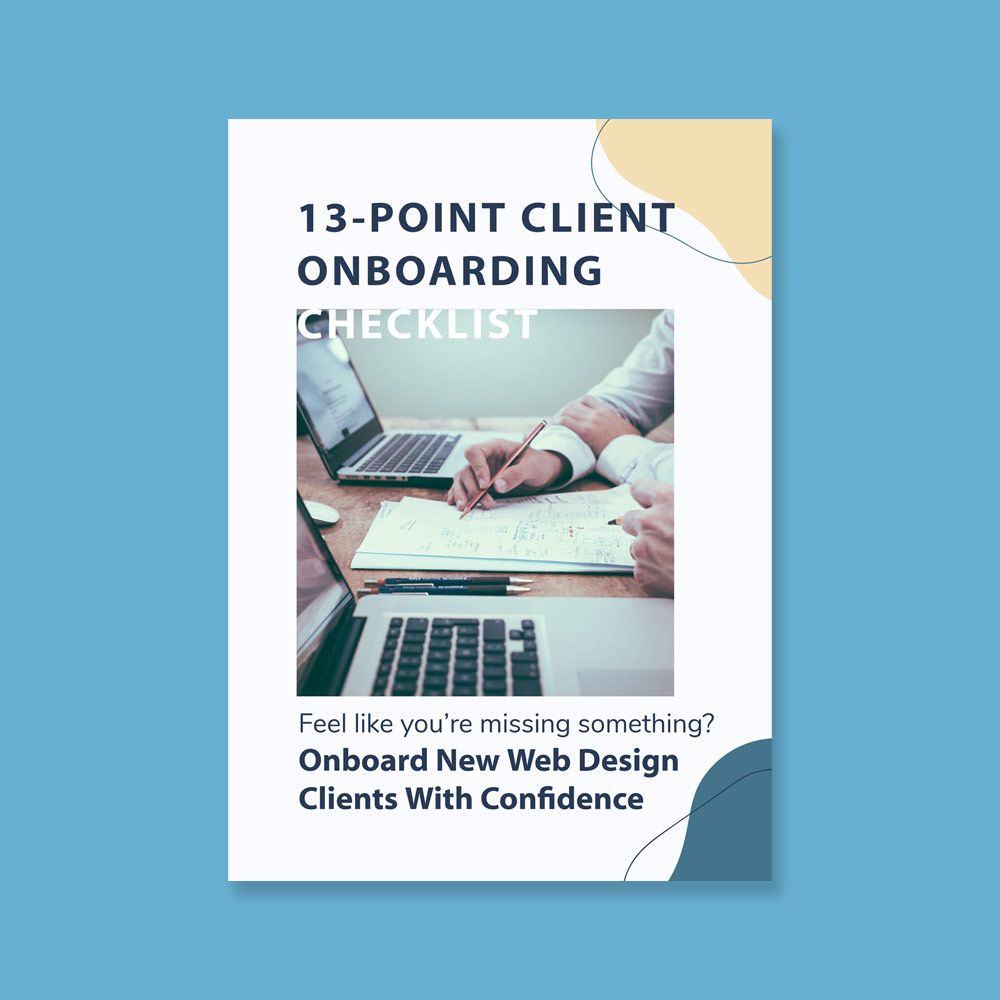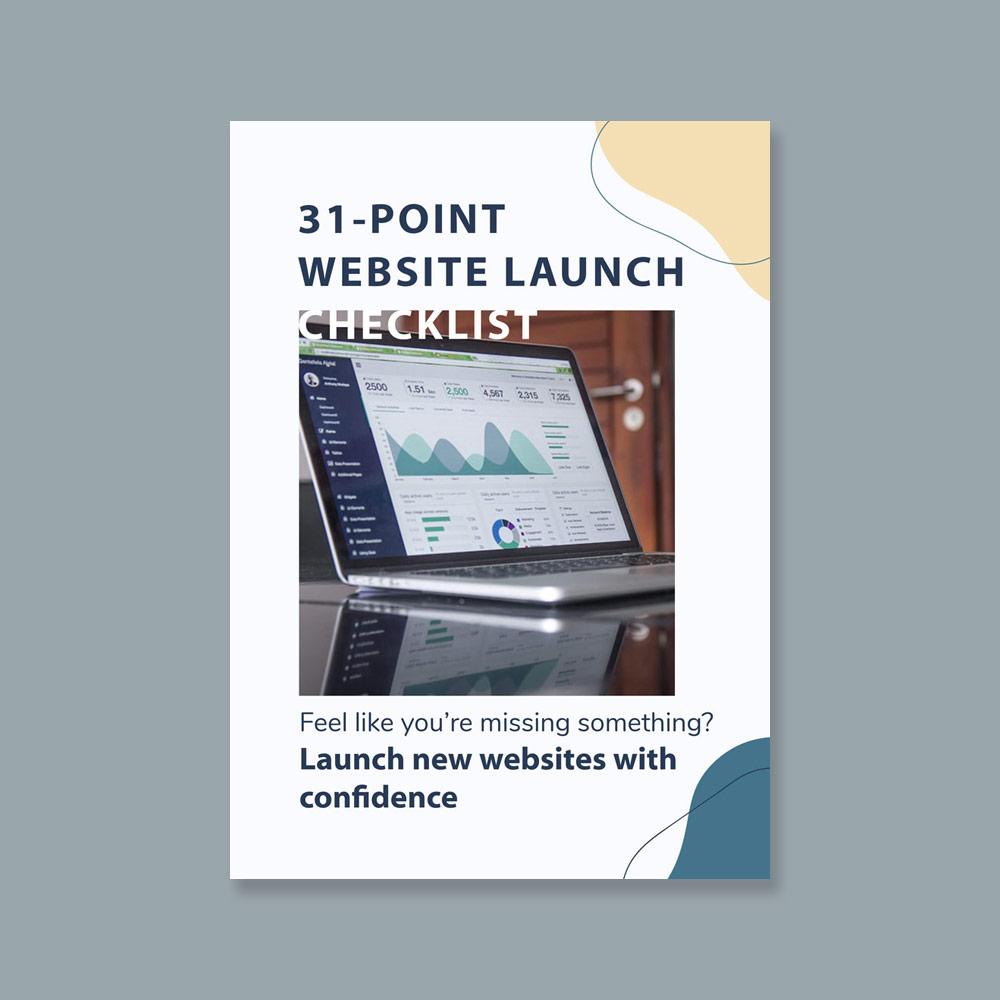The “Social Media Marketing For Business Mindset” road has ditches on both sides:
The “If I had more business social media followers, that would bring in more leads” ditch:
 Instead of leads, depending on your organization, you might be looking for more donors, attendees, members. These ideas will still apply!
Instead of leads, depending on your organization, you might be looking for more donors, attendees, members. These ideas will still apply!
We all see “influencers” and brands with a million followers and think to ourselves, “If we only had THAT kind of following, we would be getting leads from our social media platforms all the time.” While having a massive following definitely gives more impact to your reach and more link clicks and video views, it’s an incorrect assumption that simply having a massive following automatically generates revenue for your business. That’s the first ditch.
The “Business Social Media Accounts Are Just For Brand Awareness, Not Revenue” ditch:
Consider a brand like ‘Coca-Cola’ which sells through retailers, and therefore, isn’t making direct sales. In their case, social media platforms are about brand awareness. Coke doesn’t want you to try to buy something on their Facebook page.
They want you to think of them and choose them first when you walk into a store to buy a drink. In the case of most other businesses, having this mindset can turn into thoughts like, “Having a social media strategy doesn’t really matter”, or, “I’ll get an employee to just post something.”
These ideas then don’t lead to any new business being generated through social media, so the owner says, “See! I was right. Social Media doesn’t gain our business any new clients.”
Don’t fall into either Social Media Marketing ditch: 5 tips to help
Probably 10% of social media channels land in the ‘massive’ category (which is not a set number – that number is always shifting as follower numbers grow), and 10% fall into the ‘Brand Awareness’ category, but for 80% of businesses, it’s not about ‘Getting Massive’ or simply ‘Brand Awareness.’ For 80% of businesses, you can drive the social media marketing road without allowing your mindset to fall into either ditch with these 5 steps:
Step 1: Determine Your Business’ Target Audience
 Who are you trying to reach with your business’s accounts… please don’t say, “Everyone”, or narrow it down only one step to, “Everyone who drives a car.”
Who are you trying to reach with your business’s accounts… please don’t say, “Everyone”, or narrow it down only one step to, “Everyone who drives a car.”
You need to be more specific – like a segment of a segment.
Understand the difference between “Potential Clients” and “Probable Clients”
Consider brands like Nike, Starbucks, and McDonald’s. Can you tell which is the audience for each of these 3 brands:
—– Potential clients: Everyone who wears shoes.
Probable clients: 18-35-year-olds who believe that a specific type of shoe can help them increase their athletic performance.
—– Potential clients: Everyone who drinks coffee or tea.
Probable clients: People who have expendable income that would make the choice to pay a premium for specific coffee or tea in order to engage with the Starbucks brand.
—– Potential clients: Everyone who eats food.
Probable clients: Someone looking for the convenience and consistency of a franchise, and willing to pay a premium for that convenience or type of food relative to going to the grocery store and preparing healthier meal choices at home.
Here are some questions that can help you narrow down your ‘Probable’ audience in your online marketing:
- Who typically makes the decisions in the industry that you serve? Is it the hiring manager, the IT department, the person who does the grocery shopping, the parent who will register their kid for an event or league, or maybe the teenager with disposable income? If someone in an organization (business, corporation, family, church, not-for-profit) is going to make the step to find out about becoming your client, who is that person most likely to be? HINT: Check out your current customer base!
- Where is your audience geographically? Are they within the US? In the Southern Hemisphere? European? Traveling abroad? Within 30 miles of a lake? Live on the beach or in the mountains? In an area where there is snow part of the year? In an area where there is never snow? In an apartment building downtown? In the suburbs? Within walking distance of public transit?
- What kinds of topics do your followers engage with? Is your target audience engaging with funny videos, lifestyle content, aspirational quotes, ‘How-To’ information, purely entertainment, fashion, travel, finances?
- What formats are your audience most likely to enjoy? Are your social media followers most likely to watch videos, read or listen in long-format, memes, gifs, share a quote image, engage with witty videos, watch videos of people living out a dream of travel or lifestyle, or watch a video from an industry expert? HINT: Check out how your competitors are using social media to get high engagement for ideas and real-life market research.
- What age group or life phase are your typical followers in? Seniors have different purchase habits than teenagers. New parents have different goals than empty nesters. Young entrepreneurs have a different mindset than recently-retired entrepreneurs.
Step 2: Which Social Media Platform Does Your Audience Use?
Knowing where your audience is most likely to hang out means you’ll know where you focus your time and resources when creating a social media marketing strategy.
HINT: If you’re on more than one platform, then you have different segments of followers on each. Create custom content for each platform!
If you don’t have the time and resources to create relevant, unique content (or to at least modify your content for each different platform), then choose the one platform where your customers will most likely be and focus your efforts there. Laser focus beats a shotgun approach.
After identifying your business’ target audience on Social Media, figure out which platform(s) are most likely to reach them.
Where is my business audience using social media?
 Facebook: Male users (19.3%) and female users (13.2%) between the ages of 25 and 34 years are the biggest demographic group on Facebook, and 75% of online users with an income of more than $75K are on Facebook. Read the full article…
Facebook: Male users (19.3%) and female users (13.2%) between the ages of 25 and 34 years are the biggest demographic group on Facebook, and 75% of online users with an income of more than $75K are on Facebook. Read the full article…
Pinterest: 34% of Pinterest users earn between $50,000 and $74,999 per year. 71% of Pinterest users are females. 35% of Pinterest users are 35-49 years old. Full Article…
Twitter: 32% of U.S. Twitter users have higher college degrees. The total number of Twitter users in the UK is 15.25 million. 38% of U.S. Twitter users are between the ages of 18 and 29, 26% of users are 30-49 years old. 77% of Americans who earn $75,000 or more use Twitter. Get all the stats…
YouTube: 51% of people over 75 watch videos on YouTube. 37% of Millennials aged 18 – 34 are binge-watching YouTube daily. 89% of YouTube users come from outside the US. Read the YouTube stats.
Snapchat: 61% of Snapchat users are female, and 38% are male. 69% of U.S. teens say they use Snapchat. 61% of female users and 38% of male users worldwide use Snapchat. Only 5% of U.S. 56+-year-olds use Snapchat. Full Snapchat user stats…
Instagram: 67% of U.S. adults ages 18-29 use Instagram in the United States. 89% of users are outside the U.S. 73% of U.S. teens say Instagram is the best way for brands to reach them about new products or promotions. 30 million Instagram accounts tap on a shopping post to learn more about products every month. Get all of the Instagram user stats.
LinkedIn: After the US (171 million+), India (69 million+), China (51 million+), Brazil (45 million+), and Great Britain (29 million+) have the highest number of users. 24% of Millennials (18-24 years old) use Linkedin. 50% of internet users with a college degree or higher use LinkedIn. The average income of a LinkedIn user currently stands at $46,644 per year. See the LinkedIn user stats.
Tiktok: 41 percent of TikTok users are aged between 16 and 24. 56% of TikTok users are male, and 44% are female. Roughly 50% of TikTok’s global audience is under the age of 34, with 26% between 18 and 24. Chinese users account for 80% of the total time spent using TikTok in 2019. 43% of new TikTok users are from India. Read all of the Tiktok user stats.
Step 3: Define Your Customer Journey (the funnel), answering the questions, “How will they get to know us on Social Media”, and, “What’s next?”
This step comes even before building your social media content. You have to have a clear path of how your social media follower is going to become a customer. When working with a wholesale client recently, we mapped out a customer journey. Since end-users can only purchase through a dealer, their focus is on brand awareness, not ‘Click to purchase.’ Here’s the marketing funnel we came up with for their followers:
- Someone hears about our company and checks us out on Facebook or Twitter.
- Customer visits website to learn about our products (through a blog post link, link found in a comment, answering a question, or as a link provided by our team on someone else’s post).
- Our company gives visitors something for free on our website that provides value to them, even if they decide not to do business with us. This allows us to be seen as providing value, allows the client to get to know us, and gives us an opportunity to follow up. (An example might be: Tips for X industry, tools for success, ideas to generate X result, or a ‘How-To’ video).
- They see how the product fits their needs and can get them their desired results.
- Next, we help them find a dealer on our website.
- Requests our products from the dealer (in person or on the dealer’s website).
- They love using our products, so they tell friends (in person, on forums, social media posts, and recommendations) for FREE!
- We engage with mentions as endorsements, by liking, commenting, and sharing, to help more customers hear about us through organic reach.
Your customer journey may include a purchase on a 3rd party site like Etsy or Amazon. Maybe your journey includes a consultation, a phone call, an email sequence, or a free sample. Whatever your journey (or funnel) might look like, be clear on what those action steps are.
You might realize that, up until now, you’ve been trying to get them from Step 1 to Step 4, not realizing that 2 & 3 are being neglected. You might realize that you’ve got 3 or 4 different options for Step 3 (call us, send us an email, sign up for our newsletter, or click this button to shop online).
If so, which one of those is most likely to lead your customers through the endpoint of the journey?
What businesses often miss in their journey:
Many businesses imagine that their customers need to end with ‘Making a Purchase.’ In the example above, this leaves referrals, engagement, endorsement, and word-of-mouth on the table. Make it easy for your customers to share and endorse your product, and engage with them when they do. They’ll be much more likely to engage the next time they make a purchase, too!
Even if you’re not active on every channel, monitor each account so people can ‘tag’ you, and you can interact with their ‘tag’. When you send out your physical product or complete your service, include information on your social media handles, and ask people to share or leave a review! Oftentimes, people will respond to that simple request.
Now you can build a business social media strategy to attract clients!
Step 4: Build a Social Media Strategy for your business that leads into your customer journey
 If you haven’t already, download 1001 Social Media Post Ideas for Businesses. This will give you tools and tips on the content and format to post for your brands. Here are a few high-level generalizations that are helpful rules of thumb for social media content:
If you haven’t already, download 1001 Social Media Post Ideas for Businesses. This will give you tools and tips on the content and format to post for your brands. Here are a few high-level generalizations that are helpful rules of thumb for social media content:
The Social Media 80/20 rule
80% of your content needs to be entertaining, informational, and meant to create engagement. 20% of your content (at most) is promotional in nature. Get this wrong and your followers will ‘change the channel’ on your broadcast.
Post a Consistent Frequency
A general rule of thumb is to post daily on platforms like Facebook, Linkedin, or Instagram. Posting weekly works on YouTube. Posts 4-5 times per day works on platforms like Twitter and Tiktok. If you have the capacity, it’s not uncommon to post 2-3 days on places like Facebook or Instagram, but if you have 7 pieces of content this week, it’s better to post 1/day than it is to get excited on Monday and post all of it.
Using a tool like coshedule.com (affiliate link) will allow you to build all of your content and pre-schedule it, so you don’t have to remember each day to stop and make a post. Instead, you can spend some time each day responding to comment or questions on the posts that have gone LIVE.
VIDEO WINS
On every channel, to some degree or another, video is a great way to get better exposure for brands. It’s one of the most effective tools available to connect and build relationships with your audience:
- Turn a graphic into a ‘gif’
- Go LIVE with a video instead of writing a blog post
- Add a motion background to a quote graphic instead of a still graphic
- Choose video over photos
- Turn on your camera and answer a common question from clients
Here are some tips for using LIVE video in your social media strategy.
Keep a consistent theme to your social content: make it match your brand’s personality
Not necessarily in design, but in your personality as a brand – in the message your company portrays – consistency builds trust.
If you’re goofy one day, shined-up professional another day, trying to stir the pot another day, then endorsing the competition the day afterward, then post random questions like, “What’s your favorite flavor of ice cream?”, when you have nothing to do with the ice cream industry, you’re going to lose your audience’s attention, and lose the opportunity to use social media to build relationships.
Answer questions like: What is your ideal client’s pain point? How do you provide a solution to that? What would make your clients laugh and recognize that you ‘get’ what they’re going through? What would make them drive past the competition to work with you? What about your business personality resonates with them?
Include outgoing links to your blog or products when applicable
Include the “next step” for your customers in the 20% promotional content, AND when someone asks a question, either publicly or privately. Don’t just answer with a model number, but send them a relevant blog post of someone using the product, tag a brand or influencer who has raved about using that product lately, or offer to get on a call to answer your customers’ questions.
Engage with other accounts on Social Media
I did a social media audit for a client less than a week ago. This company is great at sharing related content from the industry, but they’re simply broadcasting, even when sharing other people’s blog posts, tips, tools, videos, and ideas.
For example, they weren’t tagging the author of a blog post they shared on Twitter, even though the author had a huge following and could have extended their organic reach to a larger audience with a simple ‘retweet’.
It’s been said 100 times, and if you’re ever at a social media conference or seminar, I can guarantee you’ll hear it: Social Media is supposed to be social. Too many businesses use social media as broadcast media.
If every post sounds like ‘Here’s what we have to say’ more than they sound like ‘What do you think about this?’, you’re not asking your audience to be social.
To break out of that mindset, engage with accounts in the same way you might at a networking event. ‘Like’ and comment on posts from your dealers, suppliers, retailers, and complimentary products. If you share a blog post from someone else’s blog, ‘tag’ them in the share so they can share it with their followers, or comment on your post to create engagement.
Before posting anything, ask yourself the question, “Will this post sound like I’m being social, or like I’m broadcasting information?” Connect with your audience by being where they are! Join a free Facebook Group where your audience is, join the conversation as a helpful voice, and answer questions. It’s a great way to learn what questions and conversations are happening in your community.
Leverage audience engagement
Ask a question, create polls, do ‘Fill in the blank’ posts, share posts with ‘What do you think?’, or, ‘What would you have included on this list?’ Ask your audience if they prefer ‘A’, or ‘B’, or if they had to choose, then which end result of your product would they prefer (more efficient or more luxurious).
Paint a picture of the end results of using your products, and ask your audience what they think to get them engaged in the conversation. A trick to integrate your product or service into the conversation is to ask for feedback.
- “Working on new packaging! (add in packaging pictures or video). Do you prefer green or blue?”
- “We’re thinking of offering a package price for 2 of our best-selling items. (add in an image of each). Would you like to see Package A+B or package B+C?”
Create your content to sound like you want to learn from your engaged audience rather than insisting that they should give their attention to learn from you!
 Budget time EVERY DAY purely for social media engagement in 2 ways: Social Media Management
Budget time EVERY DAY purely for social media engagement in 2 ways: Social Media Management
1) Take time every day to reply to comments and answer private messages. If someone has taken the time to engage with your post, don’t ignore them! Imagine if someone sent an email asking about a product they wanted to buy from you, and you chose not to answer the email. Or imagine someone left you a voicemail asking about Product A or Product B for their situation, and you left the voicemail for a few weeks until you had time.
Make it a daily priority to check and respond to see if someone has asked for information about your products or services (either as a public comment or a private message).
2) Make a daily habit of 10/10/10: Like 10 posts from others, comment on 10 posts, follow 10 new people who are in your industry or fit your target audience. Do this for each channel your business is on. This can easily be done on a coffee break or lunch break, but skipping this step would be like going to a networking event, not starting conversations, but instead, just talking about your products to whoever will listen.
If you’re on Twitter, Linkedin, Facebook, and Instagram, then this is 10/10/10 x 4 channels. If you don’t have time for that, then you’ll need to reevaluate how many channels you want to be on and be sure to be consistent on the channels you choose. One channel done well is better than watering down multiple social media accounts.
Step 5: Play the long game of investing in Social Media
Social Media Marketing is a long game. You can’t expect to get your online ordering to skyrocket the first month you start to post social media content, any more than you would give up on networking events if you didn’t land 3 clients in your first chamber of commerce meetup.
Simply put, these are tools in your toolbox to build your community and let them know about your brand, which leads to learning about your relevant products and services.
Social media is about building relationships. Relationships take time. Show up consistently, be helpful, and have a clear journey for someone to follow once they’re looking for solutions you can provide.
I would love to hear what has worked for you in gaining new clients from your social media marketing
Post ideas? Engagement questions? Strategies to get more comments? Leave a comment below so we can learn together!




